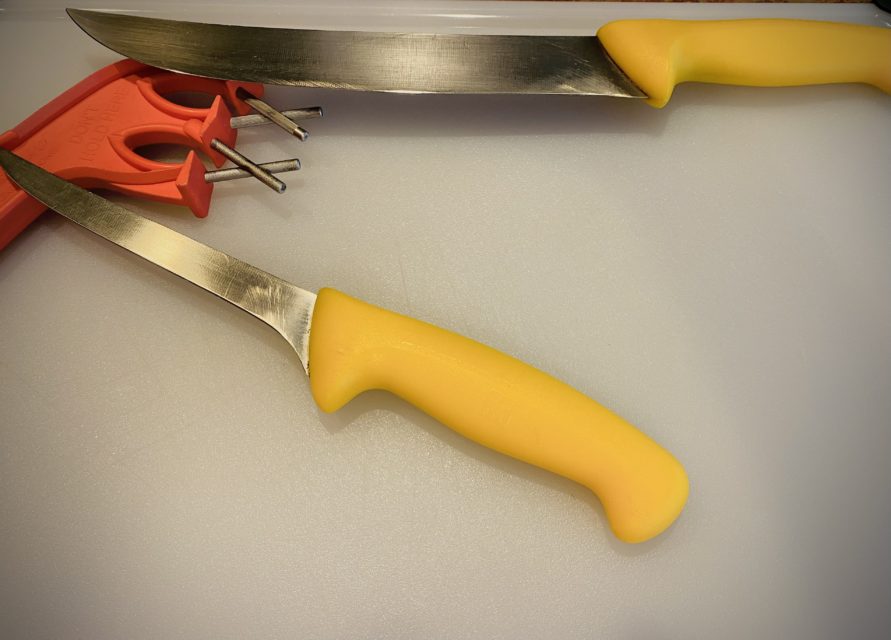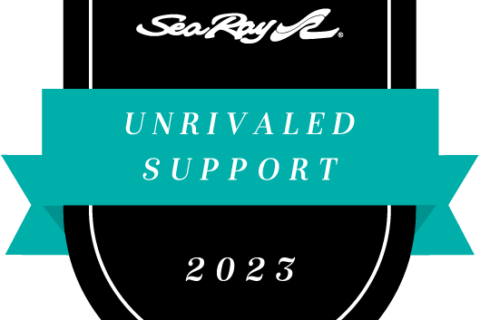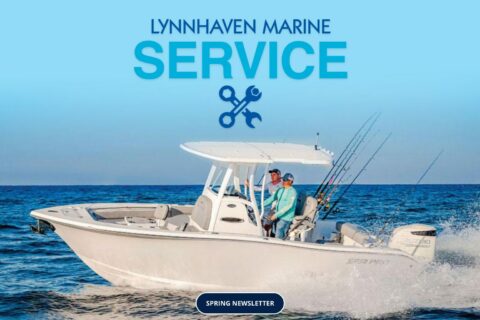
Ask any self-respecting chef what kind of knife he likes best and the first response undoubtedly will be “a sharp one.”
Anybody that’s ever used knives to cook and prep with (all of us) will tell you that a dull knife is a pain to work with and greatly increases your chances of a bloody accident.
A razor-sharp cutting tool always is the safer option. If your favorite knife won’t shave the hair off your arm with minimal pressure, it’s not sharp enough. And this rule doesn’t just apply to the kitchen.
When you’re on a boat, you’ll need a knife for cutting and prepping bait. And if you’re pulling folks around on floatable joy rides, a blade that can slice quickly through the tow rope is a must if somebody gets in trouble.
Most knives you buy come pretty sharp from the get-go. Keeping them that way involves a few variables.
What kind of steel is the blade made of – is it hard or soft? Hard steel will hold its edge longer but is harder to sharpen. Just the opposite for softer steel, which brings us to the maintenance part of knives (which presents as many options as there are knives).
Now I remember the days when I’d sit for hours watching my grandfather sharpen his pocket knife and grandma’s kitchen blades on an old oil stone. He was a triangle model, with three different levels of coarseness. Slowly and methodically, he would run the business edge of the blade over stones that he had formed a valley in the middle over the years. They were so soaked with oil that he rarely needed to add more.
These days, oil stones are used mostly by diehards who refuse to change. One favored sharpener is a V-shaped pair of ceramic or diamond-infused sticks. These two are great for a quick edge. Miniature grinding machines work, but if the blade isn’t pulled at a consistent speed and firmness, your edge can form a dip in it. And many kitchen knife sets come with their own steel, but there’s a real art to using one.
My favorite is the Rumixin Pro, which features an intricate setup of bars and table clamps that hold small wet stone sharpeners that are guided over the edge at the precise angles wanted. But it’s all a preference.
The best thing you can do is take your knives to a professional (does anybody know if Sharp Eddie’s is still at the Virginia Beach Oceanfront?). Some companies that service restaurant knives also are in the area.
Whether you decide to do it yourself or not, it’s a good idea to have a finishing strap of leather like you used to see on old barbershop chairs to put an edge on a straight razor for shaving. And if you take it on yourself, be patient and slow – basically becoming one with the knife. Pay equal attention to both sides because you could end up with a curved edge.
I like to pick a day when I notice all of my knives losing their edge and sit down to do them all. Remember, if it won’t easily shave the hair off your arm, it’s time to go back to the grinding stone (pun intended).
To follow some of my other work, go to: www.leetolliveroutdoors.com



